One of the most recognizable and controversial pieces of religious clothing worn today is the hijab. Often mistakenly called the burka, hijab is the dress code the majority of Muslim women begin to adhere to at around the time of puberty, which entails covering the entire body except for the face, hands, and feet while in the presence of non-related men. However, some women chose to cover the face as well. Hijab is interpreted by every woman in a different way, though all wear it because they believe the Qur’an instructs them to do so.
“And say to the believing women that they should lower their gaze and guard their modesty; that they should not display their beauty and ornaments except what must ordinarily appear therof; that they should draw their veils over their bosoms and not display their beauty except to their husbands, their fathers, their husbands’ fathers, their sons, their husbands’ sons, their brothers, or their brothers’ sons or their sisters’ sons, or their women or the servants whom their right hands possess, or male servants free of physical needs, or small children who have no sense of the shame of sex, and that they should not strike their feet in order to draw attention to their hidden ornaments. And O you Believers, turn you all together towards Allah, that you may attain Bliss.” (Qur’an 24:31).
The hijab is widely understood to not only be a dress code, but also a guide to behavior. For instance, most people would agree that flirting and touching men in any way other than a simply handshake would be inappropriate for a Muslim woman, especially if she wears hijab. There are as many interpretations to hijab as there are Muslim women; each woman wears it in a slightly different way or to a different extent. While in Oman, I have met Muslim women who simply wear a scarf placed on their heads, and women who cover their entire body, including the face. Nonetheless, Islam is the unifying purpose behind their actions.
Hijab can be protection, a figurative shield against other people. Hijab is a way of regaining control over one’s body, of saying “this is my personal space; no one is allowed to see or touch my body except for those I deem worthy.” I feel safe when I wear hijab, however infrequently that is.
Contrary to what many people think, hijab can be empowering. Here I am going to quote a picture I once saw online: there is nothing inherently liberating in showing skin. There is nothing inherently liberating in covering up. The liberation lies in the choice.
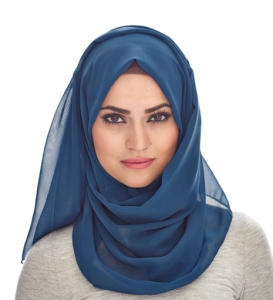
This image shows a woman wearing a hijab, a scarf wrapped to conceal the head, hair, and neck. Hijab is accompanied by loose, modest clothing. The majority of Muslim women who cover wear the hijab. Image courtesy of Google and Inayah Collection.
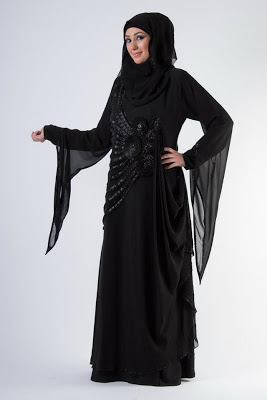
The word “abaya” literally means “overcoat” in Arabic. This loose, often black, dress-like garment is often worn over clothing with the accompanying scarf, called a “shaila”. Abayas range from trendy to conservative. This type of covering is favored in the Gulf countries, including Oman.
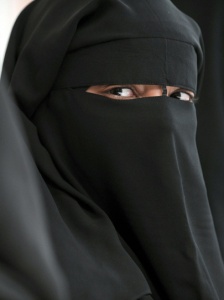
The niqab is a veil which covers the face except for the eyes. Some styles include a layer of gauze which covers even the eyes. Though niqab is not clearly required by the Qur’an, some women chose to wear it. Image courtesy of Google.
Hijab, niqab, abaya, and all other forms of covering are not inherently degrading and oppressive. On the contrary, women such as my host mother love hijab and call it a form of protection. One simple piece of fabric tied to cover the head has so much meaning to the millions of Muslim women who wear it.
This beauty that I have is just one simple part of me.
This body that I have, no stranger has the right to see.
These long clothes, this shawl I wear, ensure my modesty.
Faith is more essential than fashion, wouldn’t you agree?This hijab,
This mark of piety,
Is an act of faith, a symbol,
For all the world to see
A simple cloth, to protect her dignity
So lift the veil from your heart
to see the heart of purity.
~ Dawud Wharnsby Ali

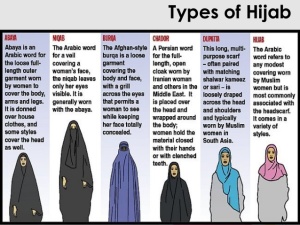
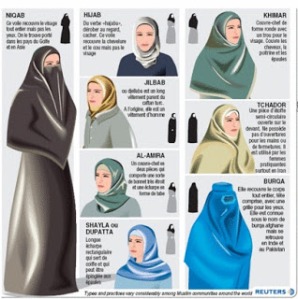
This is so well done. Thank you for laying out all this information and for bringing us all closer to understanding.